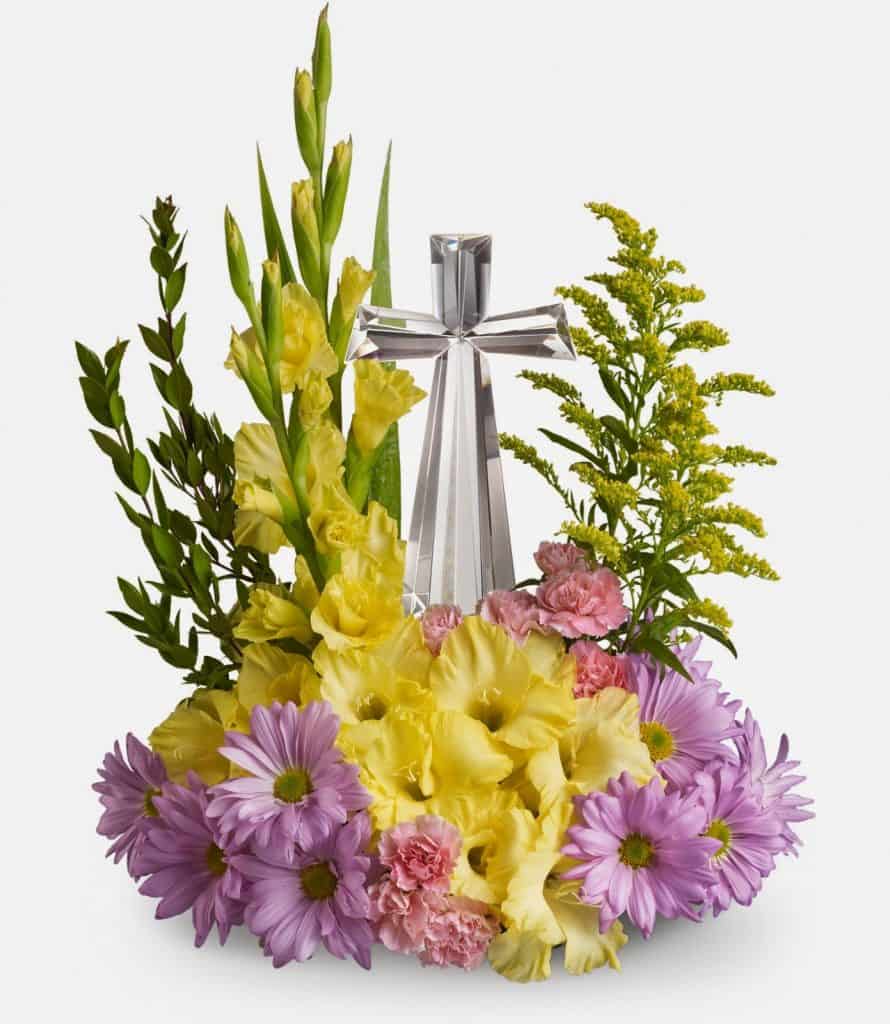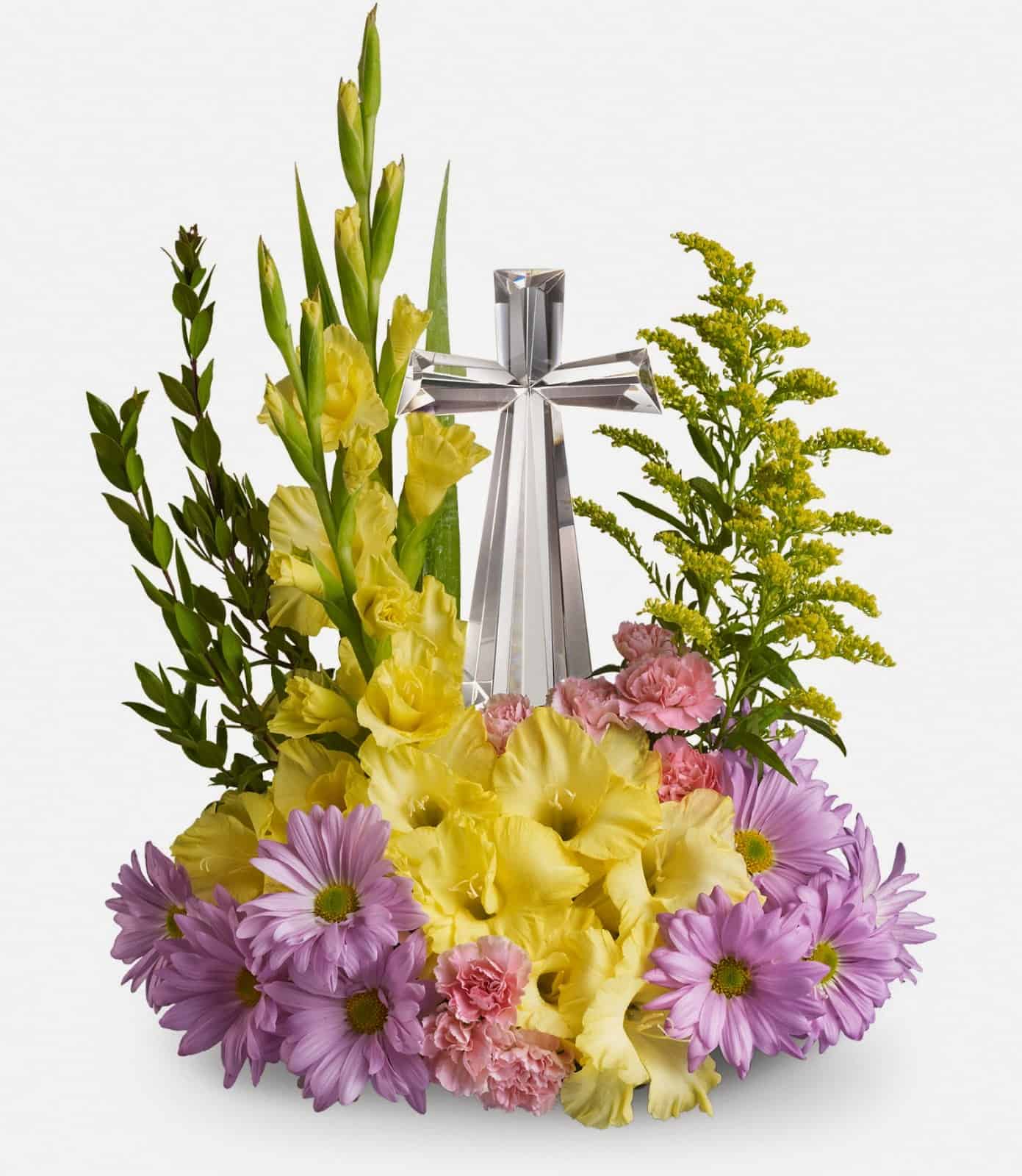
Crystal Cross can be purchased here.
Easter is a Christian holiday that celebrates the central event of the Christian faith: the resurrection of Jesus Christ three days after his death by crucifixion. The resurrection of Jesus Christ is the centerpiece
of the Christian faith. The Apostle Paul even goes so far to say that
if Jesus Christ has not been resurrected then the Christian faith is
worthless and futile (1 Cor. 15:14-17). Therefore, without Easter there
is no Christianity.
Easter is the oldest Christian holiday and the most important day of
the church year. All the Christian movable feasts and the entire
liturgical year of worship are arranged around Easter. Easter is
preceded by the season of Lent, a 40-day period of fasting and repentence culminating in Holy Week, and followed by a 50-day Easter Season that stretches from Easter to Pentecost.
What does “Easter” mean?
The origins of the word “Easter” are not certain, but probably derive from Estre, an Anglo-Saxon goddess of spring. The German word Ostern has the same derivation, but most other languages follow the Greek term used by the early Christians: pascha, from the Hebrew pesach (Passover).
In Latin, Easter is Festa Paschalia (plural because it is a seven-day feast), which became the basis for the French Pâques, the Italian Pasqua, and the Spanish Pascua. Also related are the Scottish Pask, the Dutch Paschen, the Danish Paaske, and the Swedish Pask.
How is the Date of Easter Decided?
The method for determining the date of Easter is complex and has been a matter of controversy (see History
of Easter, below). Put as simply as possible, the Western churches
(Catholic and Protestant) celebrate Easter on the first Sunday following
the first full moon after the spring equinox.
But it is actually a bit more complicated than this. The spring
equinox is fixed for this purpose as March 21 and the “full moon” is
actually the paschal moon, which is based on 84-year “paschal cycles”
established in the sixth century, and rarely corresponds to the
astronomical full moon. These complex calculations yield an Easter date
of anywhere between March 22 and April 25.
The Eastern churches (Greek, Russian, and other forms of Orthodoxy)
use the same calculation, but based on the Julian calendar (on which
March 21 is April 3) and a 19-year paschal cycle.
Thus the Orthodox Easter sometimes falls on the same day as the
western Easter (it does in 2010 and 2011), but the two celebrations can
occur as much as five weeks apart.
In the 20th century, discussions began as to a possible worldwide
agreement on a consistent date for the celebration of the central event of Christianity. No resolution has yet been reached.
What is the History of Easter?
There is evidence that Christians originally celebrated the
resurrection of Christ every Sunday, with observances such as Scripture
readings, psalms, the Eucharist, and a prohibition against kneeling in
prayer. At some point in the first two centuries, however, it became customary
to celebrate the resurrection specially on one day each year. Many of
the religious observances of this celebration were taken from the Jewish
Passover.
The specific day on which the resurrection should be
celebrated became a major point of contention within the church. First,
should it be on Jewish Passover no matter on what day that falls, or
should it always fall on a Sunday? It seems Christians in Asia took the
former position, while those everywhere else insisted on the latter. The
eminent church fathers Irenaeus and Polycarp were among the Asiatic
Christians, and they claimed the authority of St. John the Apostle for
their position. Nevertheless, the church majority officially decided
that Easter should always be celebrated on a Sunday. Eusebius of
Caesarea, our only source on this topic, reports the affair as follows:
A question of no small importance arose at that time [c. 190
AD]. The dioceses of all Asia, as from an older tradition, held that
the fourteenth day of the moon, on which day the Jews were commanded to
sacrifice the lamb, should always be observed as the feast of the
life-giving pasch, contending that the fast ought to end on that day,
whatever day of the week it might happen to be. However it was not the
custom of the churches in the rest of the world to end it at this point,
as they observed the practice, which from Apostolic tradition has
prevailed to the present time, of terminating the fast on no other day
than on that of the Resurrection of our Saviour. Synods and assemblies
of bishops were held on this account, and all with one consent through
mutual correspondence drew up an ecclesiastical decree that the mystery
of the Resurrection of the Lord should be celebrated on no other day
but the Sunday and that we should observe the close of the paschal fast
on that day only.
With this issue resolved, the next problem was to determine which Sunday to celebrate the resurrection. The Christians in Syria and Mesopotamia held their festival
on the Sunday after the Jewish Passover (which itself varied a great
deal), but those in Alexandria and other regions held it on the first
Sunday after the spring equinox, without regard to the Passover.
This second issue was decided at the Council of Nicea in 325, which
decreed that Easter should be celebrated by all on the same Sunday,
which Sunday shall be the first following the paschal moon (and the
paschal moon must not precede the spring equinox), and that a particular
church should determine the date of Easter and communicate it
throughout the empire (probably Alexandria, with their skill in
astronomical calculations).
The policy was adopted throughout the empire, but Rome adopted an
84-year lunar cycle for determining the date, whereas Alexandria used a
19-year cycle.
Use of these different “paschal cycles” persists to this day and
contributes to the disparity between the eastern and western dates of
Easter.
Religious Observances on Easter Sunday
Common elements found in most Roman Catholic, Eastern Orthodox, and
Protestant religious Easter celebrations include baptisms, the
Eucharist, feasting, and greetings of “Christ is risen!” and “He is
risen indeed!”
In Roman Catholicism, and some Lutheran and Anglican churches, Easter
is celebrated with a vigil that consists of “the blessing of the new
fire (a practice introduced during the early Middle Ages); the lighting
of the paschal candle; a service of lessons, called the prophecies;
followed by the blessing of the font and baptisms and then the mass of
Easter.”
The traditional customs of the Catholic church are described in detail in the online Catholic Encyclopedia.
In Orthodox churches, the vigil service is preceded by a procession
outside the church. When the procession leaves the church, there are no lights
on. The procession conducts a symbolic fruitless search for Christ’s
body, then joyfully announces, “Christ is risen!” When the procession
returns to the church, hundreds of candles and lamps are lit to
symbolize the splendor of Christ’s resurrection, and the Easter
Eucharist is taken.
Protestant observances also include baptism and the Eucharist (or
Lord’s Supper), and often a sunrise service (to commemorate Mary
Magdalene’s arrival at the empty tomb “early, while it was still dark”)
and special hymns and songs.
 Easter eggs |
Easter Eggs and Christianity
What do eggs have to do with Easter? Over the centuries, Easter
Sunday has been supplemented by popular customs, many of were
incorporated from springtime fertility celebrations of European and
Middle Eastern pagan religion. Rabbits and eggs, for example, are
widely-used pagan symbols for fertility.
Some Christians disassociate themselves entirely from Easter eggs because of their pagan connotations. Other Christians view Easter eggs,
or other candies and treats, as symbols of joy and celebration (as they
were forbidden during the fast of Lent) and as a “taste” of new life
and resurrection that they have in Jesus Christ. A common custom is to
hide brightly colored eggs for children to find.
More info can be found at http://www.religionfacts.com/christianity/holidays/easter.htm.






